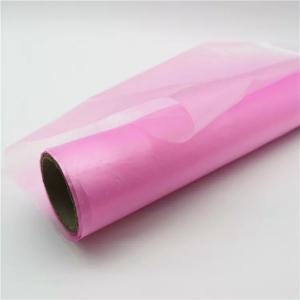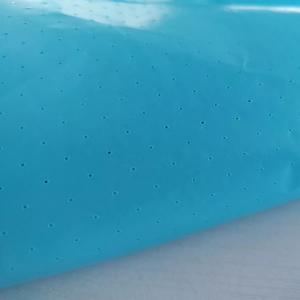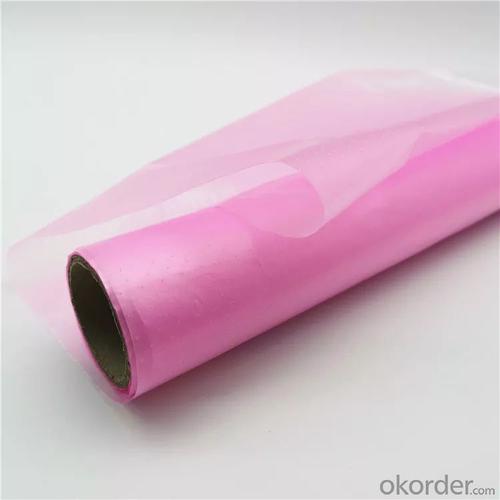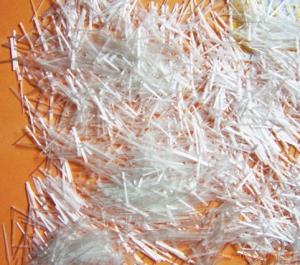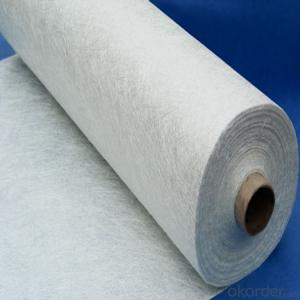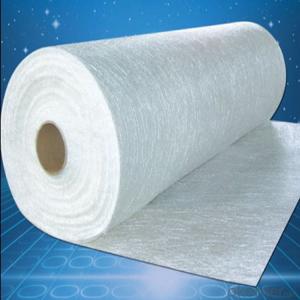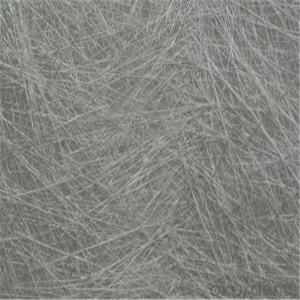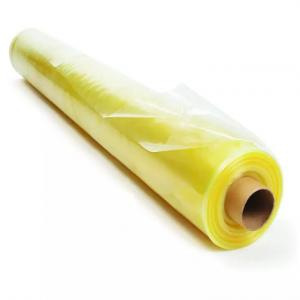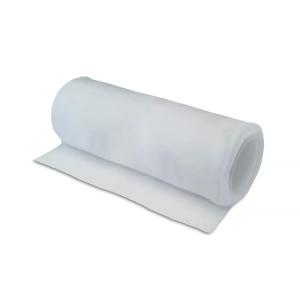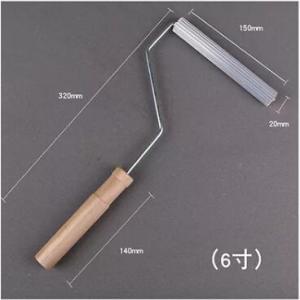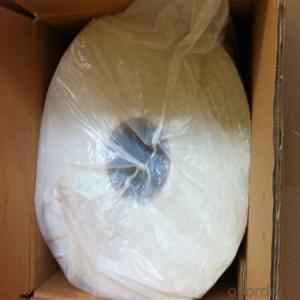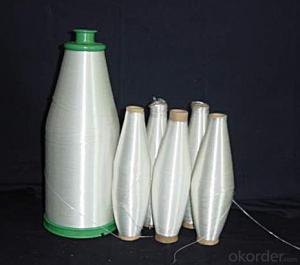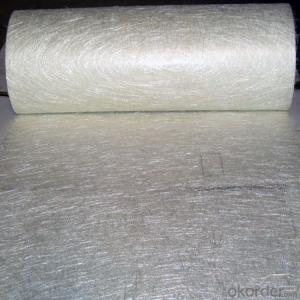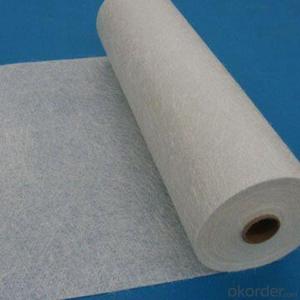Perforated Release film-vacuum infusion process
- Loading Port:
- Shanghai
- Payment Terms:
- TT or LC
- Min Order Qty:
- 200 m²
- Supply Capability:
- 20000 m²/month
OKorder Service Pledge
OKorder Financial Service
You Might Also Like
Perforated Release film
Product Description
Release film is a auxiliary material which is a isolation material in the process of composite production. It can be made into perforated and non perforated types. The perforated type is applied between the composite and suction rubber, and the non perforates type is applied between the suction rubber and molding.
Technique Data
Material:PE
Pore diameter:0.8mm ±0.2mm
Pitch:8mm±0.1mm
Thickness:30μ
Max. working temperature:120 ℃
Tensile strength:>25MPa
Elongation:>200%
Width:≤1.5m ±2mm
Length:600m or According to the request

- Q: How does the density of fiberglass chopped strand composites compare to other materials?
- The density of fiberglass chopped strand composites is relatively low compared to other materials. Fiberglass composites are made by embedding chopped strands of fiberglass within a matrix material, such as resin. The density of the composite will depend on the specific matrix material used, but in general, fiberglass composites have a lower density than metals, such as steel or aluminum. This low density is one of the main advantages of fiberglass composites, as it allows for lightweight and high-strength applications. Compared to wood or concrete, fiberglass chopped strand composites also tend to have a lower density. However, it is important to note that the density can vary depending on the specific formulation and manufacturing process used for the fiberglass composites.
- Q: Can fiberglass chopped strand be used in the production of aerospace interiors?
- Yes, fiberglass chopped strand can be used in the production of aerospace interiors. It is commonly used in applications such as insulation, paneling, and reinforcement for lightweight structures.
- Q: Is fiberglass chopped strand suitable for automotive interior components?
- Yes, fiberglass chopped strand is suitable for automotive interior components. Fiberglass is a versatile material that offers several advantages for automotive applications. It is lightweight, strong, and has excellent dimensional stability. These properties make it a suitable choice for various interior components such as door panels, dashboards, trim panels, and seat backs. Fiberglass chopped strand is commonly used in automotive interior components due to its superior mechanical properties. The chopped strands are mixed with a resin matrix to form a composite material that can be molded into various shapes. This allows for complex designs and customization options to meet specific automotive requirements. Additionally, fiberglass is resistant to heat, chemicals, and UV radiation, which are important considerations in the automotive industry. It can withstand high temperatures without compromising its structural integrity and is resistant to fading or discoloration caused by sunlight or chemical exposure. Furthermore, fiberglass chopped strand is an economical choice for automotive interior components. It offers a cost-effective solution without compromising on quality or performance. Its durability ensures long-lasting performance, reducing the need for frequent replacements and maintenance. In conclusion, fiberglass chopped strand is indeed suitable for automotive interior components. Its lightweight, strength, dimensional stability, resistance to heat and chemicals, and cost-effectiveness make it an ideal choice for various automotive applications.
- Q: Can fiberglass chopped strand be used for reinforcing concrete?
- Yes, fiberglass chopped strand can be used for reinforcing concrete. Fiberglass chopped strand is a type of reinforcement made from strands of glass fibers that are chopped into short lengths and added to the concrete mixture. These fibers enhance the overall strength, durability, and crack resistance of the concrete. They also help to control shrinkage and reduce the formation of cracks. Fiberglass chopped strand is lightweight, corrosion-resistant, and offers excellent performance in harsh environments. It is commonly used in applications such as concrete slabs, walls, precast elements, and shotcrete.
- Q: Does fiberglass chopped strand have any water absorption properties?
- Yes, fiberglass chopped strand does have water absorption properties. Due to its porous nature, it can absorb water over time, leading to potential degradation or weakening of the material.
- Q: What are the typical fatigue properties of fiberglass chopped strand composites?
- Various factors, such as the type of resin matrix, fiber orientation, and manufacturing process, influence the typical fatigue properties of fiberglass chopped strand composites. However, when compared to other materials, these composites generally exhibit favorable fatigue resistance. The type of resin matrix used is a crucial factor in determining the fatigue properties of fiberglass chopped strand composites. Resin systems with different characteristics can greatly impact the composite's fatigue life. Epoxy resins, which are commonly utilized in fiberglass composites, are known for their good fatigue resistance and ability to provide long-lasting performance under cyclic loading conditions. Fiber orientation is another critical aspect that affects the fatigue properties of these composites. The arrangement of the chopped fibers within the matrix can influence the composite's fatigue strength and durability. Typically, composites with aligned fibers demonstrate higher fatigue strength compared to those with randomly oriented fibers. Furthermore, the manufacturing process employed also plays a role in determining the fatigue properties. Factors like the volume fraction of fibers, curing conditions, and manufacturing defects can impact the composite's fatigue behavior. Employing proper manufacturing techniques, such as controlling fiber content and minimizing defects, can enhance the fatigue resistance of fiberglass chopped strand composites. In general, fiberglass chopped strand composites demonstrate good fatigue properties. They are renowned for their high strength-to-weight ratio, excellent resistance to cyclic loading, and ability to withstand repeated stress. These properties make them suitable for various industries, including aerospace, automotive, marine, and sporting goods. However, accurately determining the fatigue properties of a specific fiberglass chopped strand composite requires considering the specific resin, fiber orientation, and manufacturing process involved.
- Q: How does the fiber content affect the thermal conductivity of fiberglass chopped strand composites?
- The thermal conductivity of fiberglass chopped strand composites is significantly affected by the fiber content. As the amount of fibers increases, the thermal conductivity decreases. This occurs because the fibers function as obstacles to the heat flow in the composite material. They generate air pockets between them, acting as insulators and slowing down the heat transfer. Additionally, the fibers themselves possess lower thermal conductivity when compared to the surrounding matrix material. When the fiber content is low, there are fewer fibers hindering the heat flow, resulting in higher thermal conductivity. Conversely, as the fiber content rises, the density of fibers in the composite increases, forming more obstacles and diminishing the ability of heat to pass through. Hence, it can be concluded that fiberglass chopped strand composites with higher fiber content exhibit lower thermal conductivity, making them more efficient as insulation materials. This characteristic renders fiberglass chopped strand composites suitable for a variety of applications that require thermal insulation, such as in buildings, automotive components, and aerospace structures.
- Q: Can fiberglass chopped strand be used for ballistic protection?
- No, fiberglass chopped strand is not suitable for ballistic protection as it lacks the necessary strength and impact resistance required for such applications.
- Q: Is fiberglass chopped strand resistant to chemicals?
- Yes, fiberglass chopped strand is generally resistant to a wide range of chemicals. It has excellent corrosion resistance properties and can withstand exposure to acids, alkalis, solvents, and other harsh chemicals without significant degradation or damage.
- Q: What are the typical hardness properties of fiberglass chopped strand composites?
- The hardness properties of fiberglass chopped strand composites can vary depending on their specific composition and manufacturing process. However, fiberglass composites are generally known for their excellent hardness properties. Fiberglass chopped strand composites typically have a high level of hardness due to the reinforcing glass fibers. These fibers are typically embedded in a matrix material, such as resin, which adds strength and stability to the composite. The hardness of fiberglass chopped strand composites is often measured using the Rockwell hardness scale or the Vickers hardness test. These tests assess how resistant the material is to indentation or penetration by a harder material. Several factors influence the hardness properties of fiberglass chopped strand composites, including the length and orientation of the glass fibers, the type of resin used, and the overall ratio of fibers to resin. Generally, longer and more aligned fibers contribute to increased hardness. Fiberglass composites are widely used in industries like automotive, aerospace, construction, and marine due to their exceptional hardness properties. They offer excellent resistance to abrasion, impact, and deformation, making them suitable for applications that require durability and strength. It's worth noting that the specific hardness properties of fiberglass chopped strand composites can vary depending on the application requirements and manufacturing process. Therefore, it's advisable to consult the manufacturer or conduct specific tests to determine the exact hardness properties of a particular fiberglass chopped strand composite.
Send your message to us
Perforated Release film-vacuum infusion process
- Loading Port:
- Shanghai
- Payment Terms:
- TT or LC
- Min Order Qty:
- 200 m²
- Supply Capability:
- 20000 m²/month
OKorder Service Pledge
OKorder Financial Service
Similar products
Hot products
Hot Searches
Related keywords
